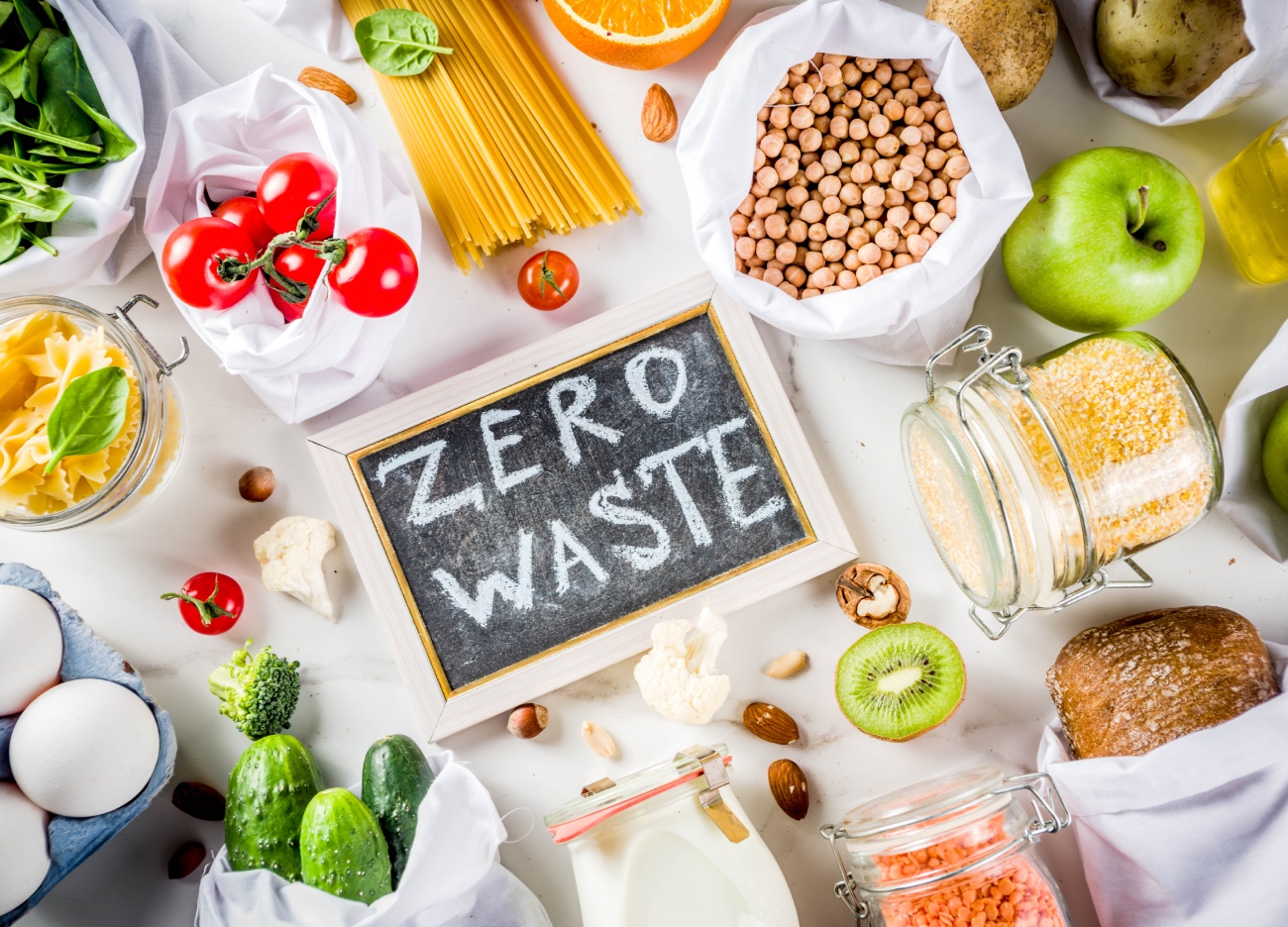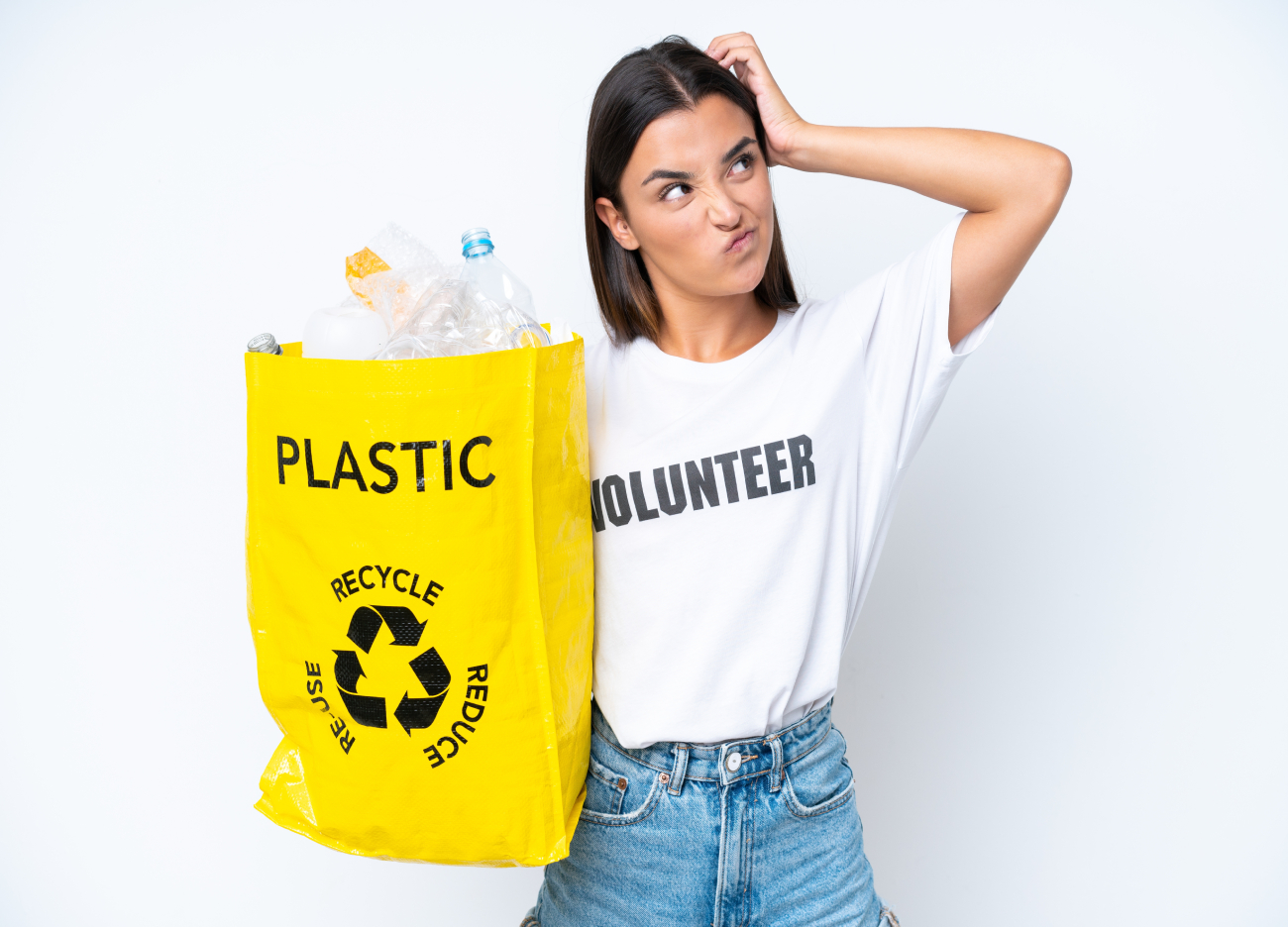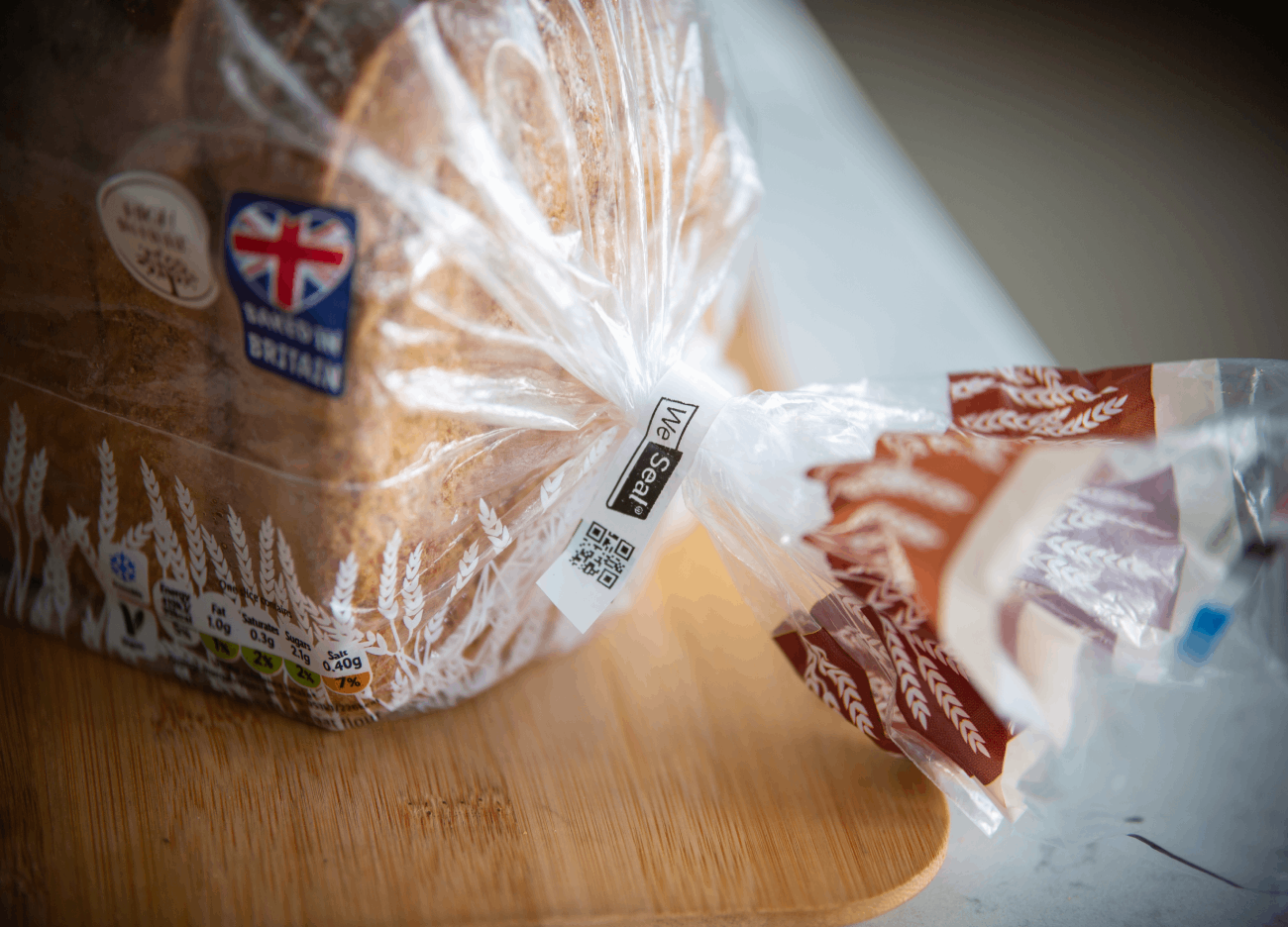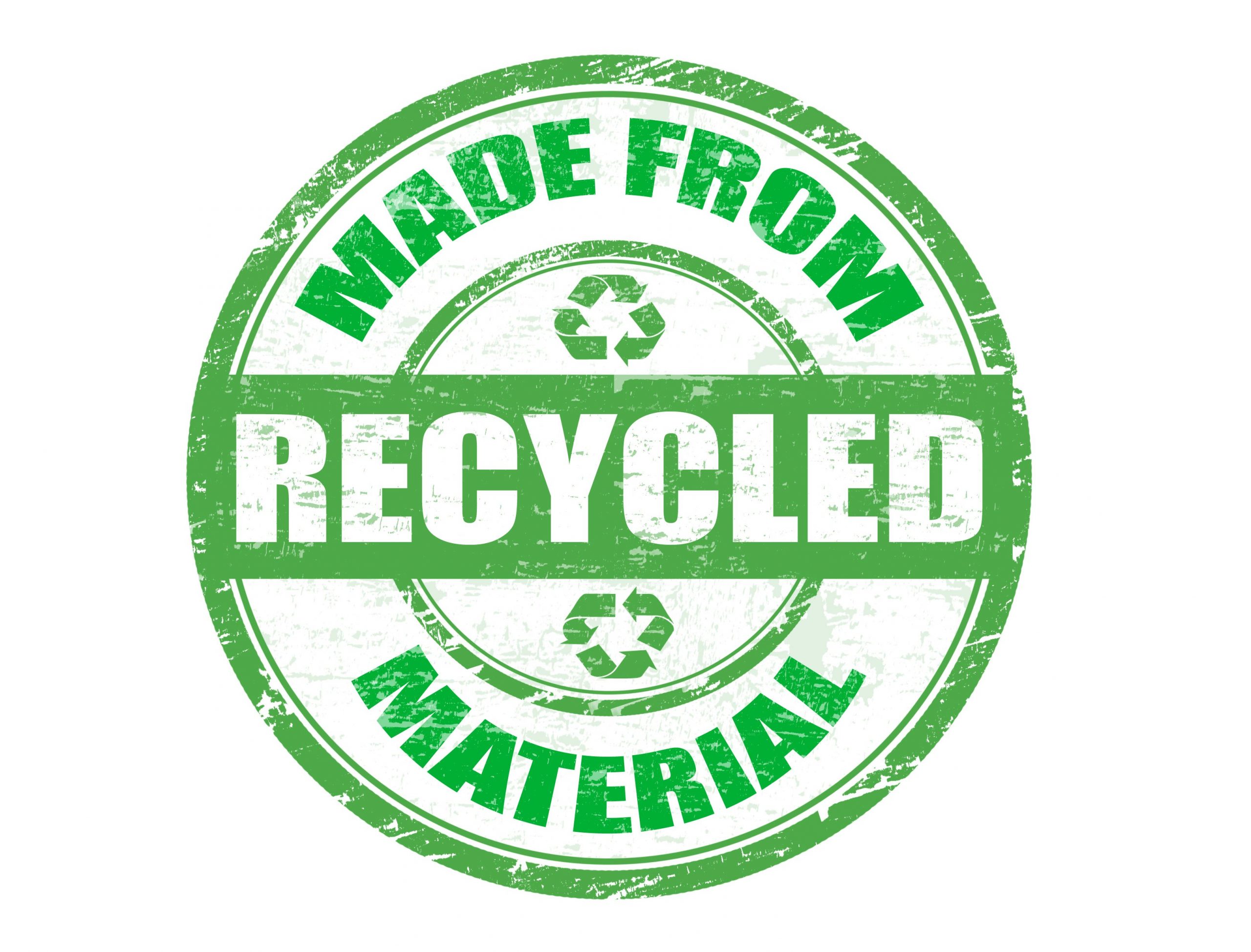
Recycled content in bread bags can help reduce climate change
Climate change is a long-term shift in weather conditions identified by changes in temperature, precipitation, winds, and other indicators. There are different factors that generate this phenomenon, both from natural and human activity sources. Among them, the greenhouse effect has been identified as a critical concern, because ongoing emissions of greenhouse gases (GHG) have the potential to warm the planet to levels that have never been experienced in the history of human civilization. Such climate change could have far-reaching and/or unpredictable environmental, social, and economic consequences [1].
In a greenhouse, energy from the sun passes through the glass as rays of light. This energy is absorbed by the plants, soil, and other objects in the greenhouse. Much of this absorbed energy is converted to heat, which warms the greenhouse. The glass helps keep the greenhouse warm by trapping this heat. The earth’s atmosphere acts somewhat like the glass of a greenhouse. About 31 % of the incoming radiation from the sun is reflected directly back to space by the earth’s atmosphere and surface (particularly by snow and ice), and another 20 % is absorbed by the atmosphere. The rest of the incoming radiation is absorbed by the earth’s oceans and land, where it is converted into heat, warming the surface of the earth and the air above it. Particular gases in the atmosphere act like the glass of a greenhouse, preventing the heat from escaping. These GHG absorb heat and radiate some of it back to the earth’s surface, causing surface temperatures to be higher than they would otherwise be. The most relevant GHG include carbon dioxide, methane, and nitrous oxide [2].
The Global Warming Potential (GWP) metric examines each greenhouse gas’s ability to trap heat in the atmosphere compared to carbon dioxide (CO2). The measurement is done over a specified time horizon. Often, GHG emissions are calculated in terms of how much CO2 is essential to produce a similar warming effect over the chosen time horizon. This is the carbon dioxide equivalent (CO2 eq.) value, calculated by multiplying the amount of gas by its accompanying global warming potential (GWP). The Intergovernmental Panel on Climate Change (IPCC), the United Nations body for assessing the science related to climate change, provides the 100-year GWPs in its Assessment Reports (SAR) [3].
Carbon footprint estimates the total amount of GHG emitted during production, processing and retailing of consumer goods. The aim is to identify major sources of emissions in supply chains to inform relevant stakeholders so that actions can be taken to reduce emissions.
The recycling of plastics reduces raw material extraction and the production of virgin plastics, along with reducing the potential for landfilling and incineration of plastic waste. Therefore, it leads to reduced GHG emissions. Recycling instead of incinerating plastics could reduce emissions by 1.1–3.0 tonnes of CO2eq., compared with producing the same amount of plastics from virgin fossil fuel feedstock (Ellen MacArthur Foundation, 2016) [4].
Plastic recycling is dominated by mechanical recycling, that is, processes in which plastics are sorted by polymer type and colour and then re-melted, before undergoing regular conversion processes for the production of plastic goods. Recent studies published by the Association of Plastic Recyclers in the US estimate that global warming potential (GWP) of recycled postconsumer resins (PCR) is around 35% lower than virgin plastic resins, using Open-loop methodology in which the recycled resin impacts include allocated share of virgin resin [5].
For plastic bread bags, mainly manufactured using polyethylene resins, COMPASS® screening LCA tool, shows a potential effect reduction of 7.8% to 21.2% in the GHG Emissions by incorporating different amount of PCR content compared to 100% virgin plastic bags. The more PCR content used in a bread bag, the higher the reduction in greenhouse gas emissions.
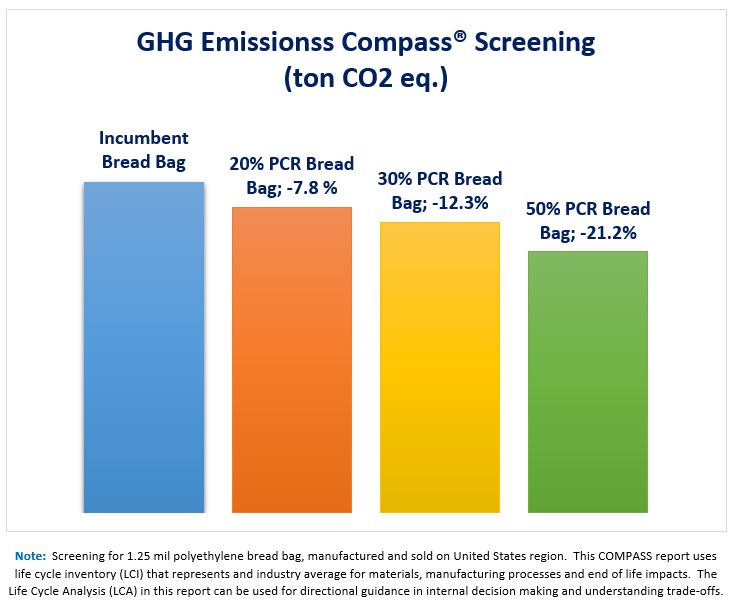
This reduction in GHG emissions for 1 million bags can also be presented in terms of avoided consumption of gasoline, as shown in the graph below. For a bag containing 50% PCR content, 1,905 liters (500 gallons) of gasoline would be avoided, which is equivalent to taking a passenger vehicle off the road for a full year, and this is only for 1 million bags. To put this in perspective, in the US alone, annual bread consumption is in the billions of loaves per year, and inflating that number would be hamburger and hot dogs buns, English muffins and tortilla bags. So by incorporating recycled content in bakery bags, the reduction in emissions would be equivalent to taking thousands of vehicles off the road every year. There is certainly lots of potential to make a difference.
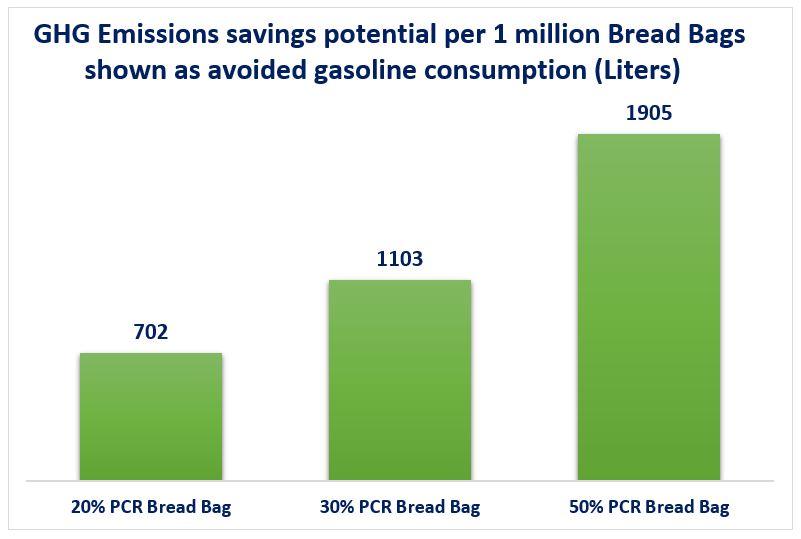
Increasing the demand of bread bags with PCR content also supports the growth of the recycling infrastructure to implement a circular economy in the baking industry. We can all make a contribution in the fight against climate change; incorporating recycled content in bread bags is a step forward in the right direction.
[1] https://www.canada.ca/en/environment-climate-change/services/climate-change/causes.html
[2] https://www.canada.ca/en/environment-climate-change/services/climate-change/greenhouse-effect.html
[4] European Environment Agency – EEA, Copenhagen, 2021 “Plastics, the circular economy and Europe′s environment — A priority for action”
[5] Franklin Associates, A Division of Eastern Research Group (ERG), December 2018, “Life cycle impacts for Postconsumer Recycled resins: PET, HDPE, and PP”

